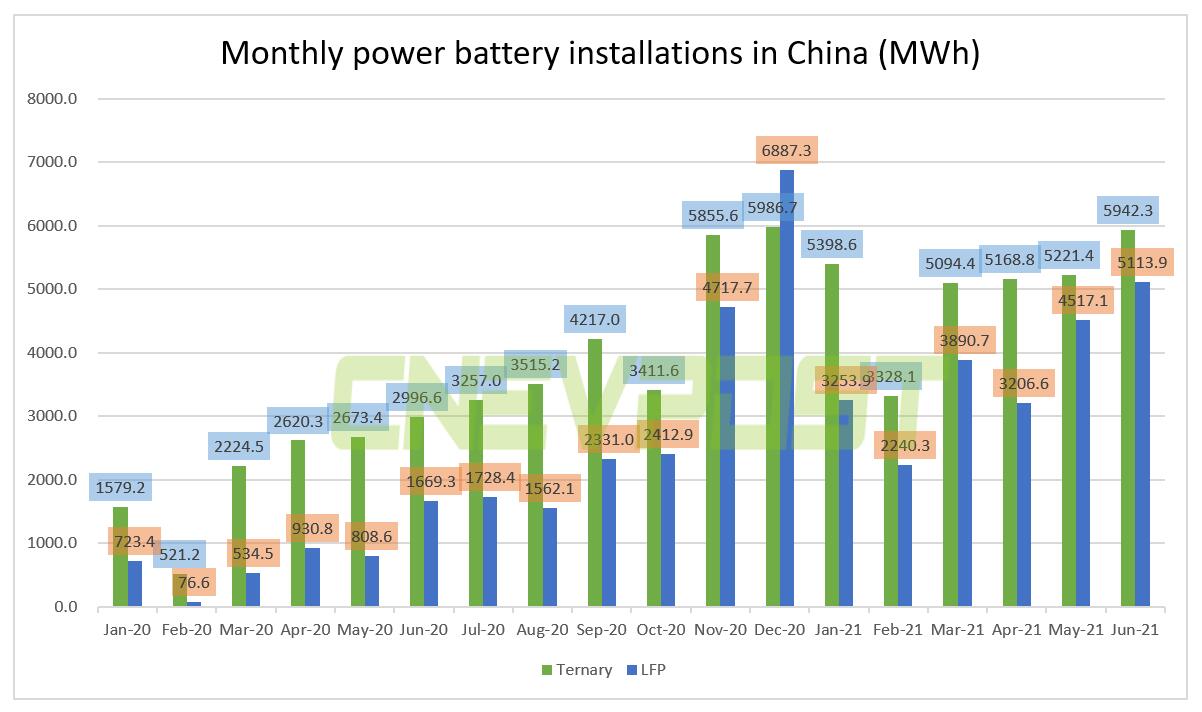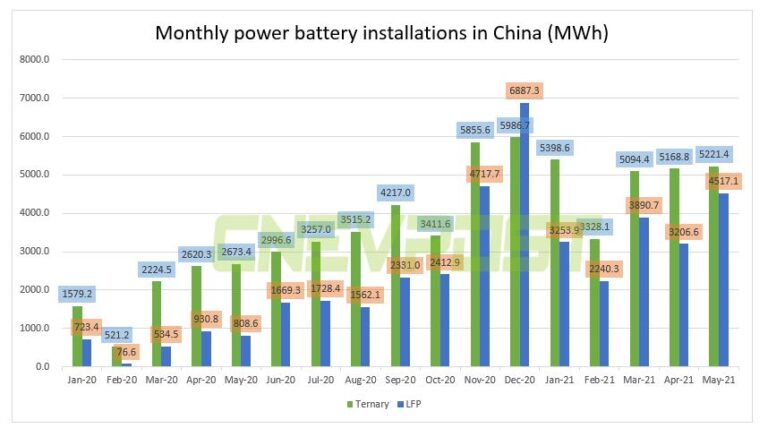China's new energy vehicle power battery installation in the first half of the year was 53.67 GWh, of which lithium iron phosphate (LFP) battery installed capacity stood at about 22.52 GWh, with market share rising to 42 percent from 27.42 percent last year, according to a report by the China Automotive Battery Innovation Alliance (CABIA)
Compared with the 4.8 GWh in the same period last year, the installed capacity of lithium iron phosphate batteries has increased by 369.7 percent.
The installed capacity of ternary batteries in the first half of the year was 31.03 GWh, with a market share of 57.8 percent, down from 72.2 percent last year.
It is worth noting that about 74.42 percent of the installed capacity of lithium iron phosphate batteries came from the passenger car market, at 16.76 GWh.
There were 61 passenger car models equipped with lithium iron phosphate in the first half of the year, including Tesla Model 3, BYD Han, Wuling Hongguang MINI EV, Hongqi E-QM5 and Ora Good Cat.
CATL's installed capacity of lithium iron phosphate in the first half was 11.43 GWh, up 282.6 percent year-over-year, and ranked No. 1 with a 50 percent market share, of which more than 6 GWh was attributed to the Tesla Model 3 Standard Range.
Separately, according to the China Automotive Battery Innovation Alliance, the installed capacity of lithium iron phosphate batteries was 5.11 GWh, up 206.4 percent year-over-year.

(Data from the China Automotive Battery Innovation Alliance. Graphic by CnEVPost. )
Xpeng's lithium iron phosphate version of the P7 began deliveries in May, resulting in record-breaking monthly deliveries of the P7, up 27 percent from April.
Previously it was reported that Leap Motor will switch all of its models to lithium iron phosphate versions this year and that Nio may also launch models with such batteries.
CICC predicts that the share of installed capacity of lithium iron phosphate batteries will increase to 45-50 percent in 2021 and reach 54 percent penetration in China in 2025.

